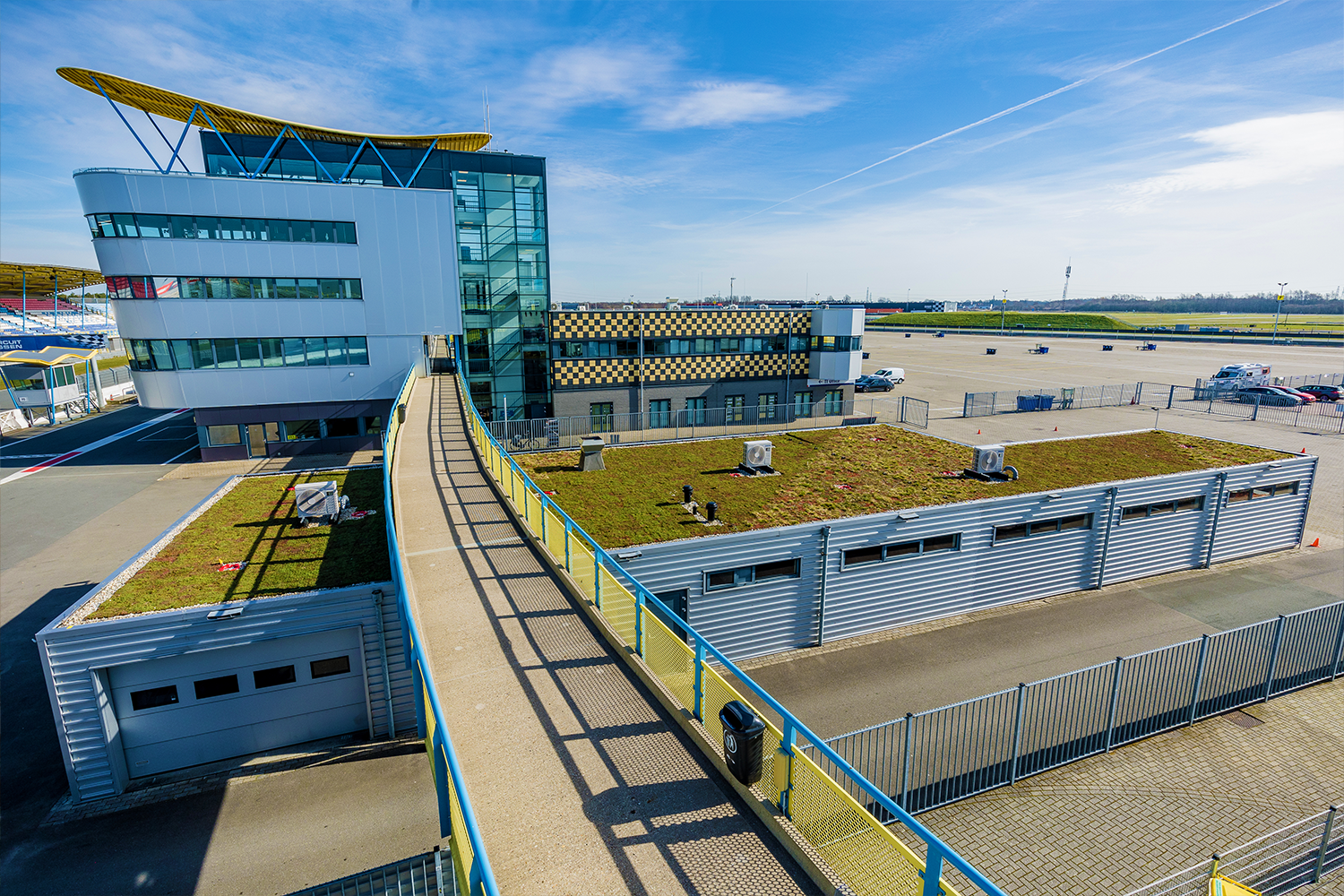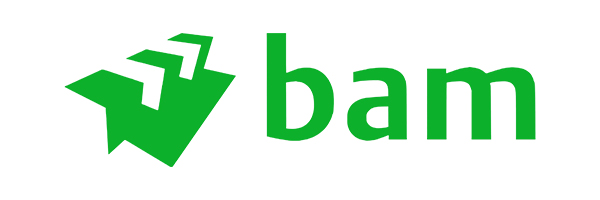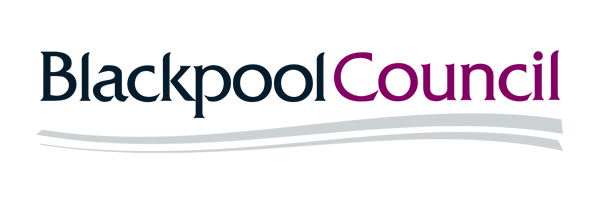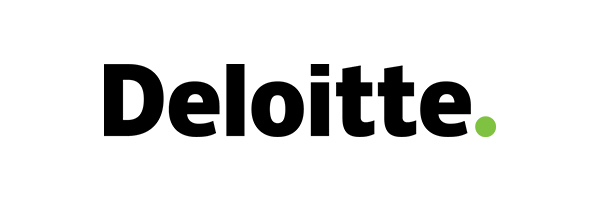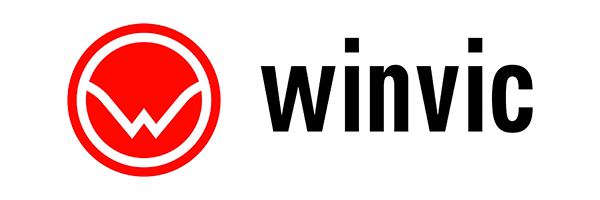The 5 key benefits of a green sedum roof
Contributes to biodiversity
Captures and buffers rainwater
Insulating and sound-dampening properties
Extends the lifespan of the roof
Improves air quality and captures fine dust
Different green roofs
Depending on the use and design of the building, vegetated roofs can be divided into various types. The difference lies in the type of vegetation. An intensive rooftop garden contains a mix of plants, grass, and sometimes even trees. Extensive roofs are covered with a substrate layer in which various types of sedum often grow.
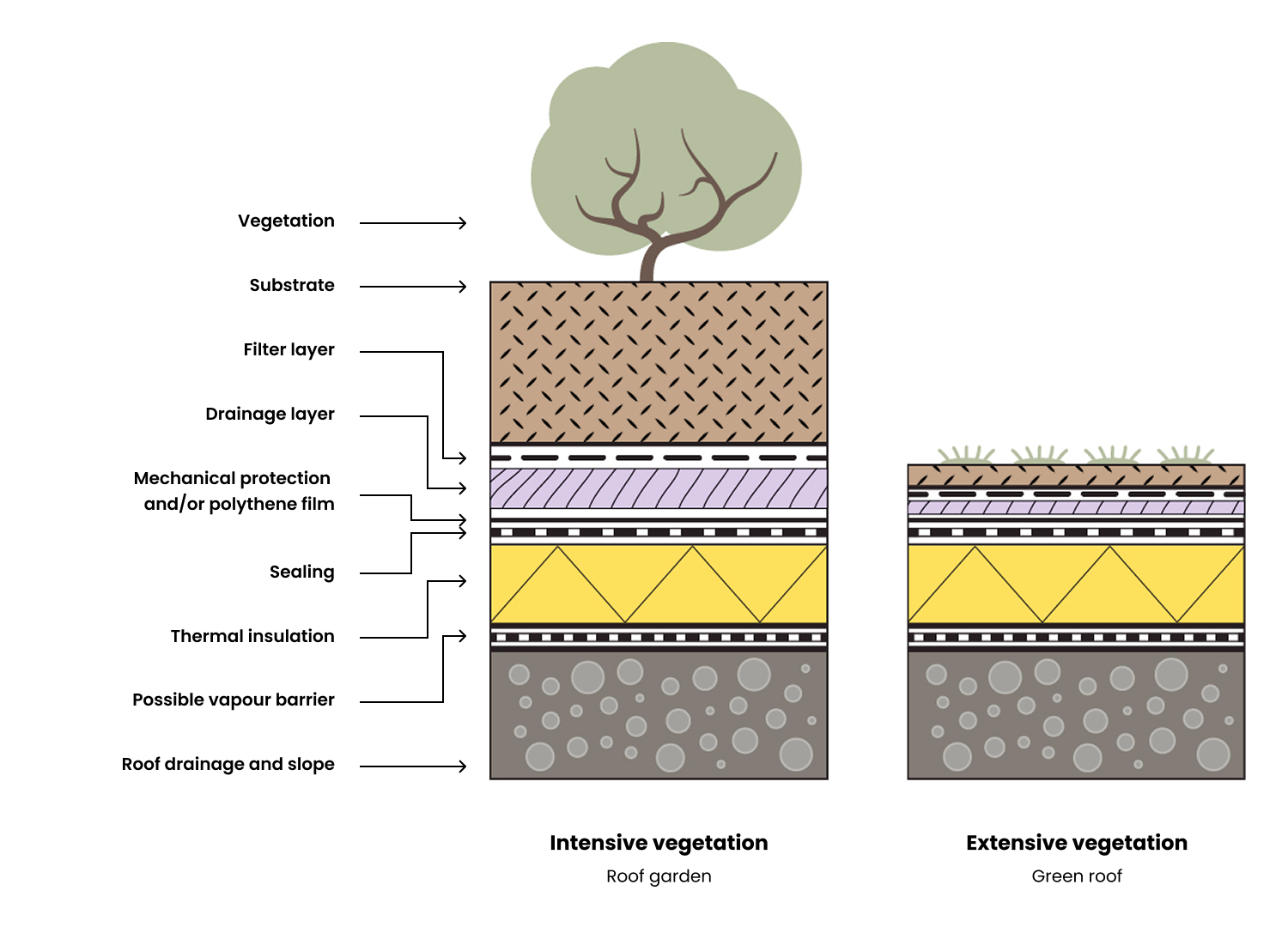
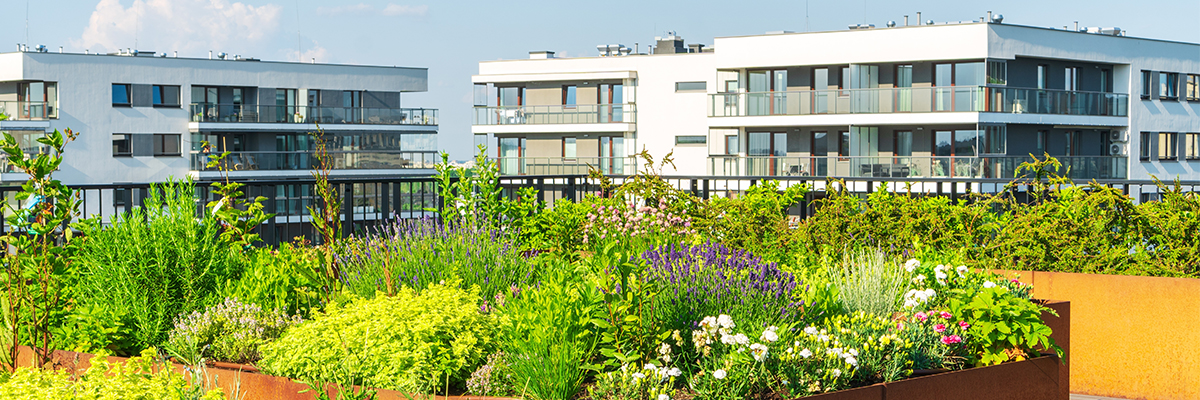
Intensive green roof
Intensive vegetation includes plants, shrubs, and sometimes trees, requires a thick substrate layer, and needs regular maintenance, such as weed control.
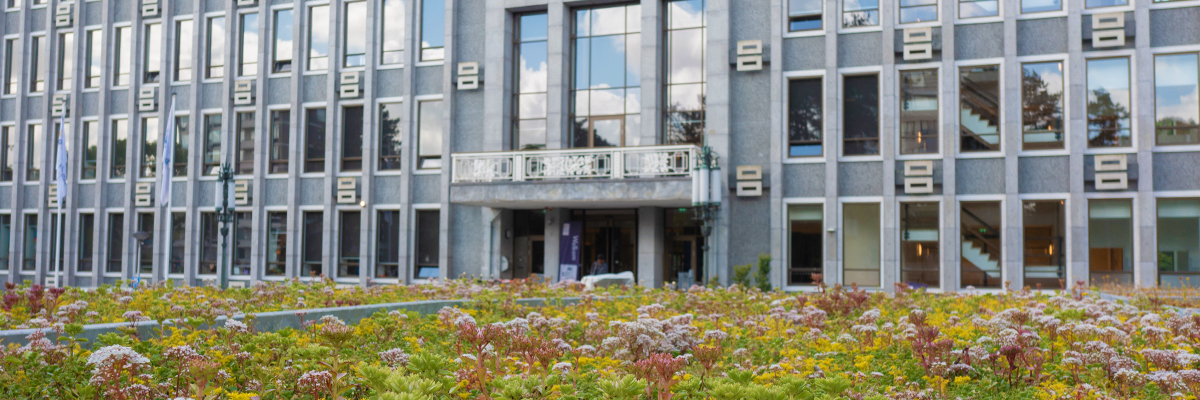
Extensive green roof
Extensive vegetation consists of sedum, herbs, and grasses, requires a thin substrate layer, and needs little water or maintenance.
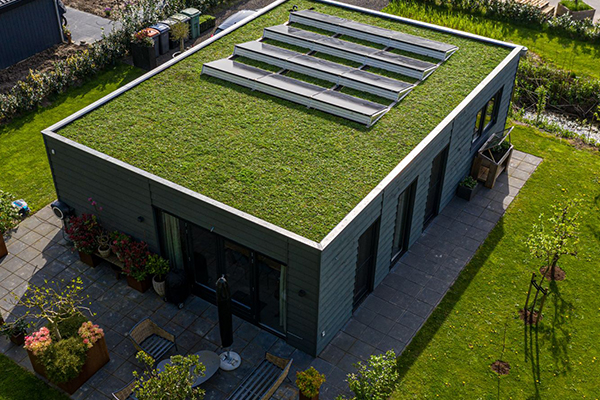
Multifunctional green roof
A multifunctional roof combines vegetation with various functions to offer both ecological and practical benefits. A combination of vegetation with retention is known as a blue-green roof. Additionally, a green roof can be combined with solar panels (yellow-green roof), and in some cases, the roof can also be used as a relaxation space, such as with a red-green roof, used as a rooftop garden or living space, enhancing the livability and aesthetics of the building.
Considerations for installing sedum cassettes
When installing sedum cassettes, some important aspects must be considered to ensure a sustainable and functional green roof:
- Load capacity and water retention: Check whether the roof has sufficient load-bearing capacity to safely carry the additional weight of the cassettes, including the stored water.
- Roof pitch: An extensive green roof system is suitable for flat roofs and roofs with a pitch of up to 10 degrees (20%). For roofs with a greater slope, securing measures, such as an L-profile, should be applied.
- Waterproofing: Ensure the roof is fully waterproof to prevent leaks. If no root-resistant roofing has been applied, a root-resistant vapor-permeable foil can be used.
- Drainage system: A well-functioning drainage system is essential for efficiently draining excess water and preventing the roof from flooding.
- Wind load: The Building Decree refers to the Eurocode (NEN-EN 1991) for calculating wind load (wind resistance) on roofs and securing roof coverings.
- Fire safety: The Building Decree specifies that the roof of a building must not pose a fire hazard. The roof must pass the test method defined in NEN 6063 or NTA 8292.
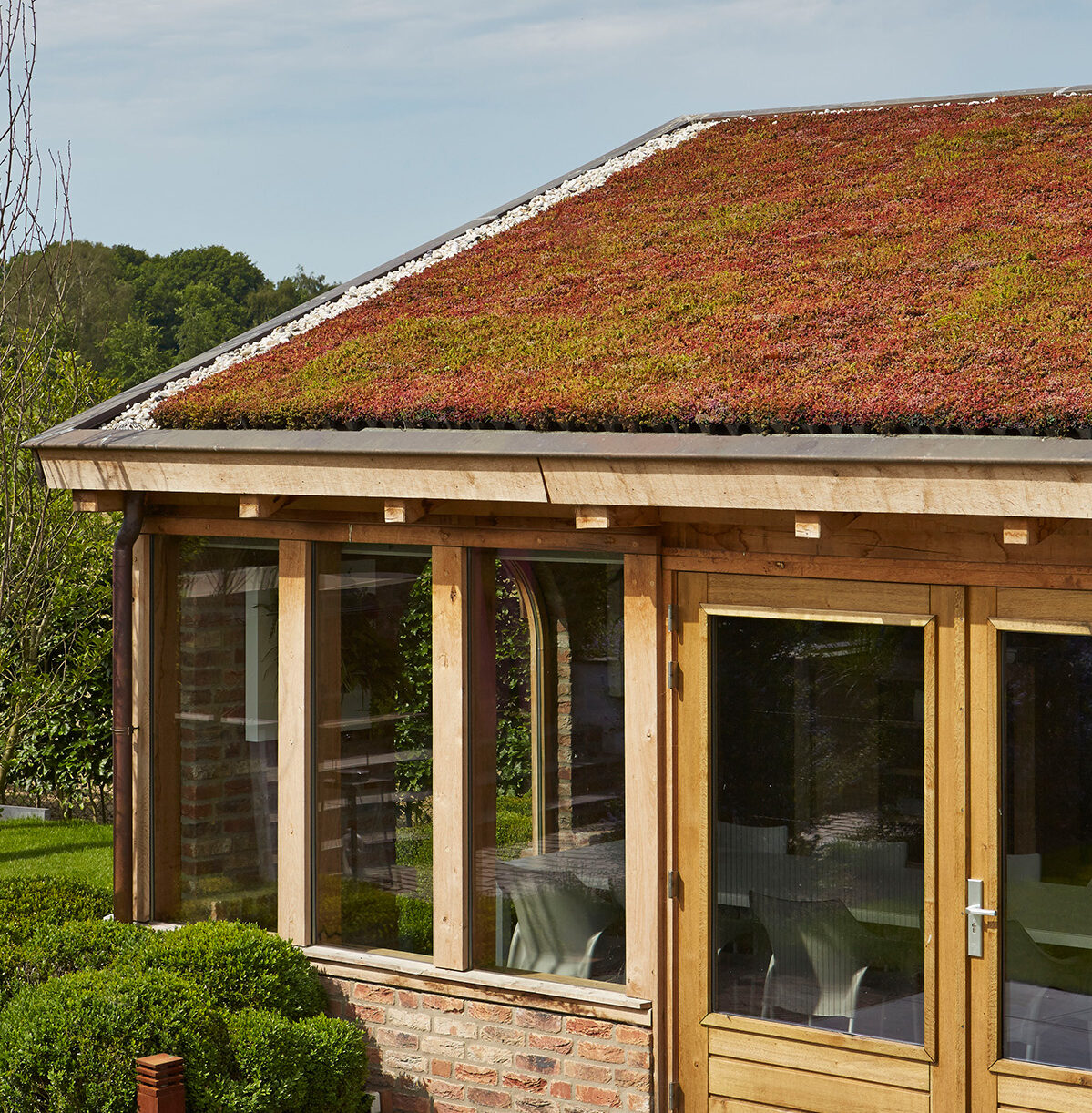
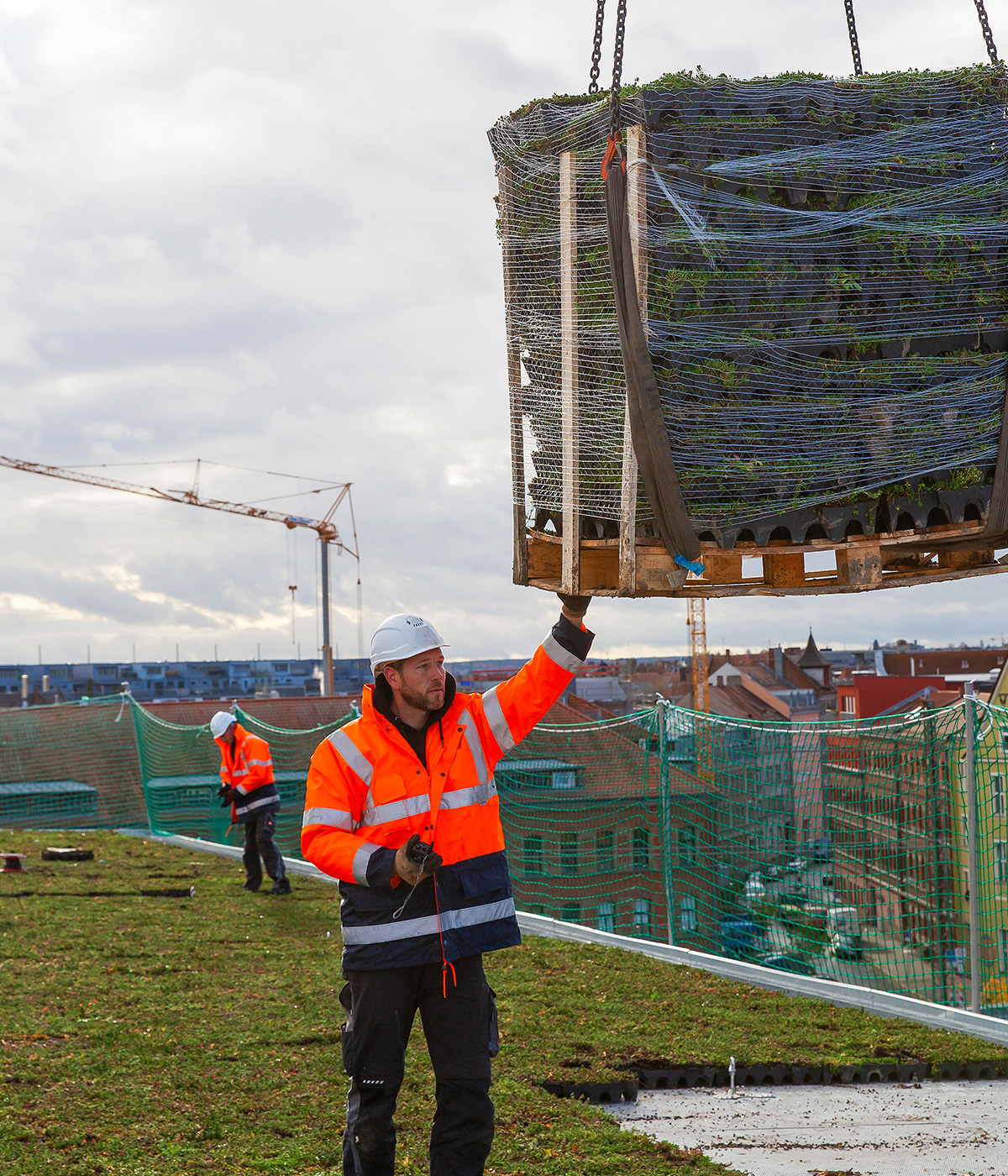
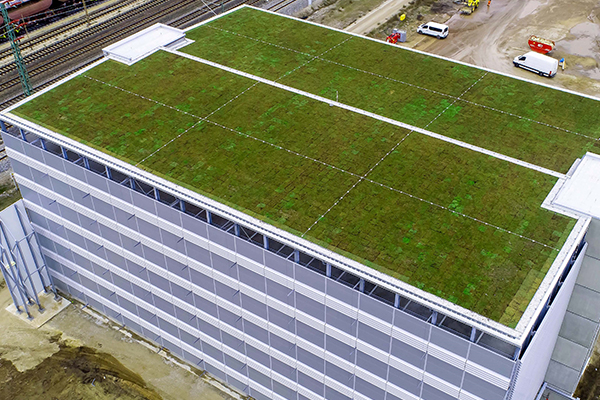

Legal requirements for green roofs
The installation of a green roof generally does not require a separate building permit but must comply with national regulations (Building Decree, Eurocode (NEN-EN 1991 or 6063), NTA 8292) and local regulations. Below are the main points of attention:
- Local legislation: Municipal rules may impose additional requirements, such as for water drainage and sewerage load. Always check the conditions in your region.
- Monuments: For listed buildings, permission may be required from the heritage department due to the impact on appearance or structure.
- Nature conservation: In or near protected nature areas, consideration must be given to flora and fauna as prescribed by the Nature Conservation Act.
- Wastewater: A green roof must comply with NEN standards for water management to prevent sewer overload.
Extensive green roof with sedum cassettes or mats?
For installing an extensive green roof, you can choose between sedum cassettes and sedum mats. Both options are ecologically beneficial, but the choice between cassettes and mats depends on the specific needs and design of the roof. Sedum mats consist of a continuous layer of sedum plants on a perforated base, which is rolled out as a whole over the roof. Sedum cassettes, on the other hand, are ready-to-use modules made of loose frames with sedum plants that can easily be laid or replaced.
Advantages of sedum roofing with cassettes vs mats
- Simple and very quick installation
- Minimal preparation required
- Built-in drainage system
- Prevents water accumulation
- Thicker substrate layer
- Better protection of the roof
- Less maintenance
- Easy to expand or move
- Suitable for reuse
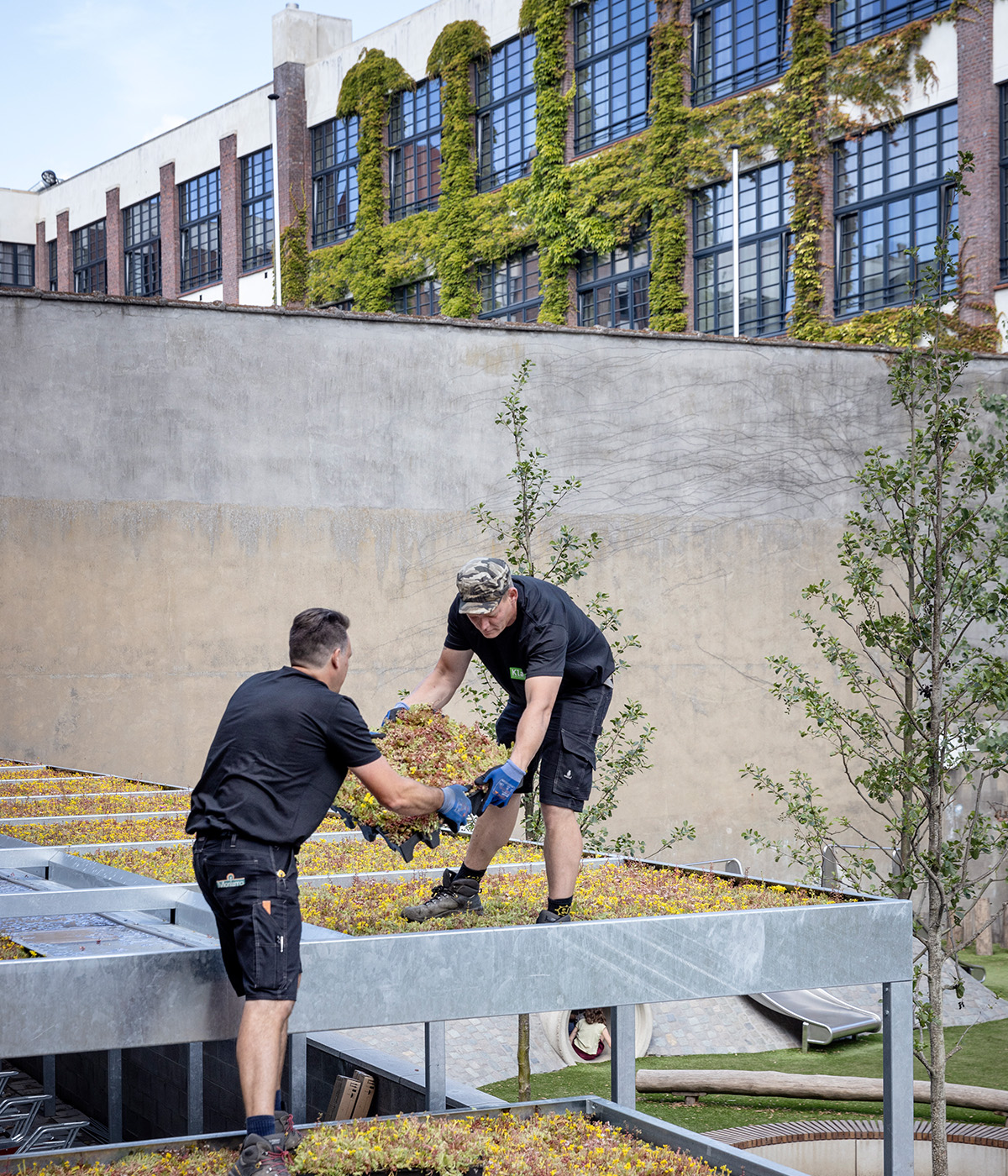
Discuss the possibilities with a specialist from Mobilane
Get in touch
By submitting this application, I agree to the privacy statement
An easy process
We begin with an introductory conversation.
Budget, planning, and quotation
Planting and preparing the green roof
Installation and handover of the green roof
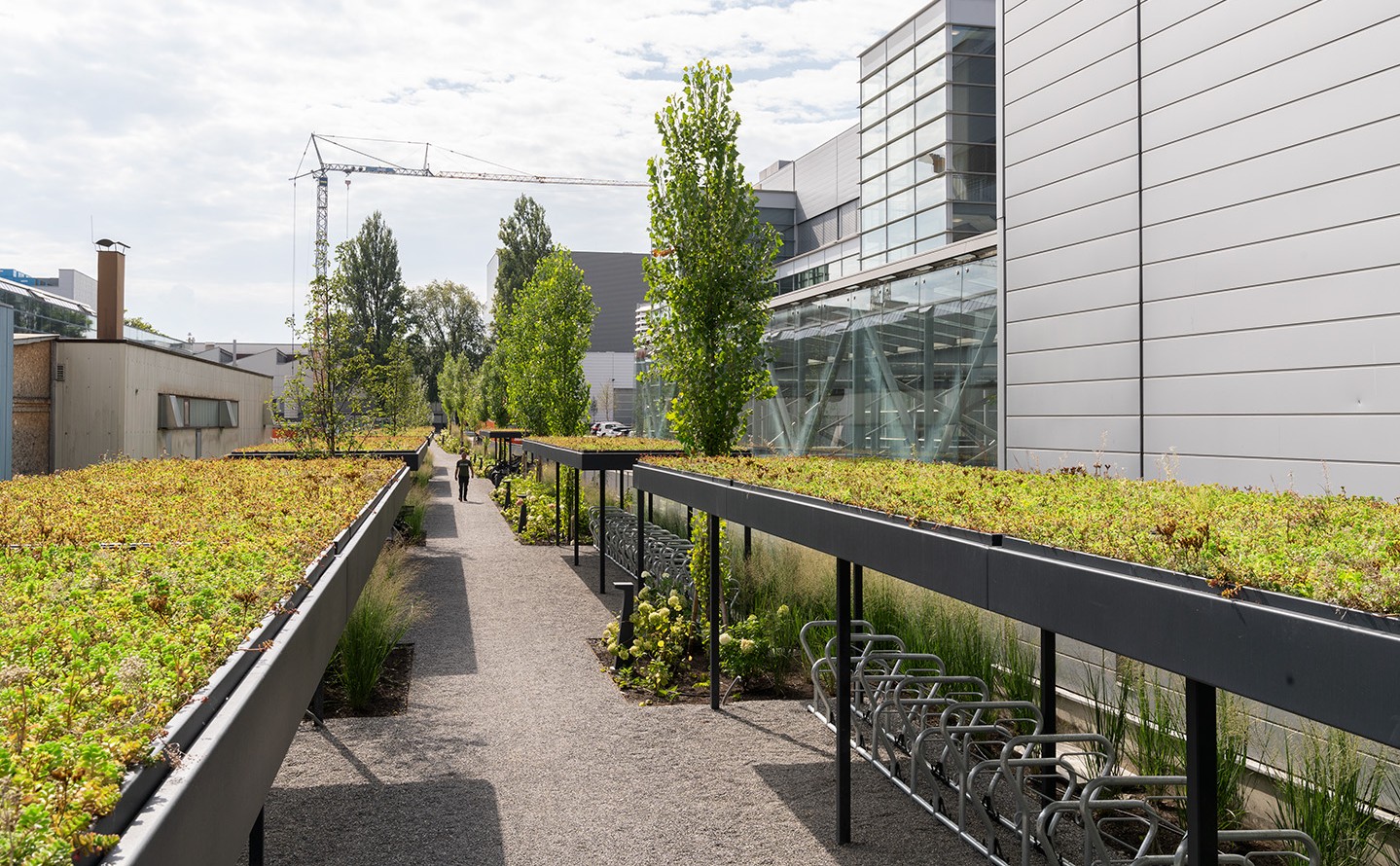
Sedum roofs: A sustainable approach to water management
In the fight against climate change and the growing threat of water-related issues, green sedum roofs are increasingly recognized as an innovative and sustainable solution for water management. These sustainable roofs, planted with succulents and other drought-tolerant vegetation, offer numerous benefits in water management, the environment, and livability, making them a valuable investment for cities and building owners.
Read moreFrequently asked questions
All frequently asked questionsYou can install a green roof yourself or have one of our partners do it. The MobiRoof ECO cassettes can be easily applied to the roof, just like laying floor tiles. In no time, a closed vegetative roof is created, providing a ready-to-use green roof with insulating properties.
MobiRoof ECO is a circular, lightweight, ready-to-use system with sedum cassettes. The cassettes are filled with water-retaining substrate and cultivated with multiple types of sedum (including Album, Spurium, and Reflexum).
The cassettes are suitable for flat roofs and roofs with a pitch of up to 20% (10 degrees). For roofs with a steeper pitch, additional measures should be taken to secure the cassettes. Due to its lightweight and compact design, the system can also be applied quickly and easily to garages, dormers, extensions, and garden sheds.
Maintenance should be performed 1 to 2 times a year and includes:
- General inspection
- Removal of weeds and seedlings
- Fertilization in the spring with sedum fertilizer
- Pruning of dead plants, usually starting mid-September, with fine clippings left on the roof and larger pieces removed
- Extra watering during periods of extreme dryness
Green roofs are divided into different types based on the vegetation. An intensive roof garden contains a mix of plants, grass, and sometimes even trees. Extensive roofs are covered with a layer of substrate in which various types of sedum grow. These roofs can be built using mats or cassettes. A multifunctional green roof combines different functions and serves multiple purposes.
Costs vary depending on the type of green roof, the vegetation, and size. On average, prices range between €40 and €200 per square meter, including installation and excluding VAT. Some municipalities offer subsidies for the installation of green roofs, which can lower the costs.
Yes, a green roof is sustainable. Besides the benefits of the plants, a green roof contributes to the longer lifespan of the roof. Furthermore, the MobiRoof ECO cassettes are made from recycled material and the cassette is fully recyclable.
Yes, a green roof has insulating properties as the plants and substrate layer act as a buffer against temperature differences. The plants absorb sunlight and moisture, keeping the roof cool and reducing the heating of the building. This can contribute to lower energy consumption for both heating and cooling.
The choice of plants depends on the type of green roof:
-
Extensive green roof: Ideal for low-maintenance plants such as sedum, mosses, and herbs. Sedum, being succulents, are well-suited to wet/dry conditions as they store water in the plant.
-
Intensive green roof: Suitable for larger plants such as grasses, shrubs, and even trees. This type of roof requires a thicker substrate layer and more maintenance.
Yes, subsidies are available for the installation of green roofs as they contribute to the sustainability of the environment. The subsidy can be up to €40 per square meter for individuals. Entrepreneurs can benefit from tax advantages through the Environmental Investment Deduction (MIA) and the Random Depreciation of Environmental Investments (VAMIL).
Discuss the possibilities with a specialist from Mobilane
Get in touch
By submitting this application, I agree to the privacy statement


